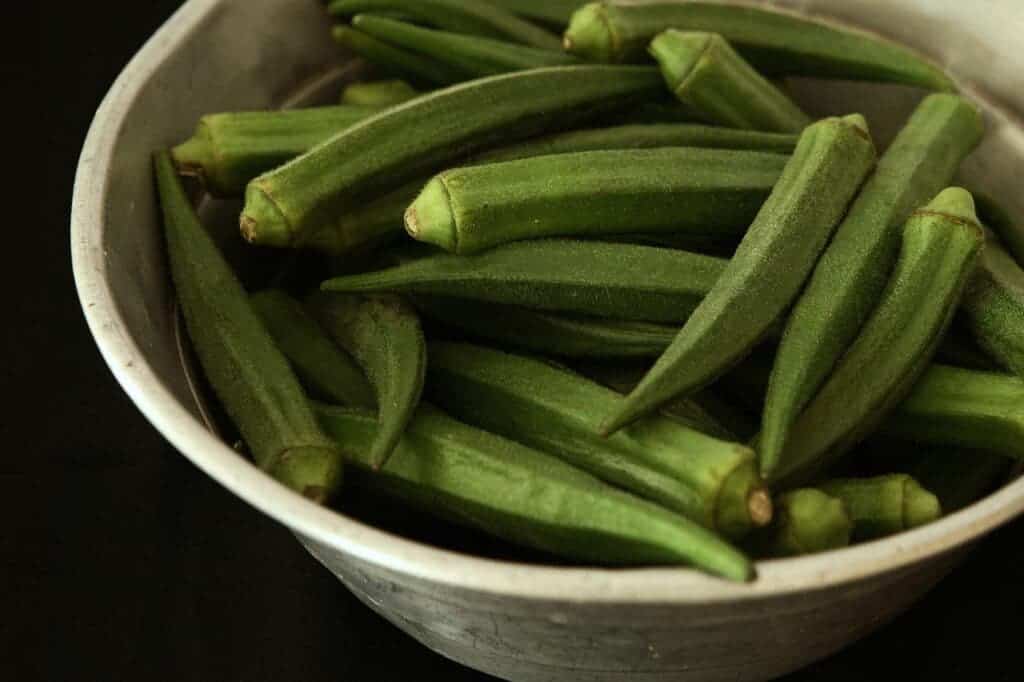Vegetables used as thickeners in stews and soups could soon help us eliminate microplastics from wastewater. According to a new study, a goo made from veggies like okra and fenugreek is as effective at drawing microplastics from water as specialized equipment — and much cheaper.

You’re forgiven if you don’t recognize this as a common vegetable. Okra (Abelmoschus esculentus) is still unknown in many kitchens in Europe and the US, but it’s very popular in the countries where it’s grown, especially in Africa, India, the Middle East, and South America. Okra is about 5 to 10 centimeters long, looks like a green chili pepper, and is consumed in many different dishes. But this isn’t a cooking story — it’s a microplastics story.
A group of researchers has created a goo from okra and other plants (including aloe, cactus, and psyllium) that can clean water and wastewater from microplastics. If further developed, the goo could be a non-toxic and sustainable alternative to removing microplastic pollution.
The threats of microplastics
Small and large particles of plastic can now be found practically everywhere on our planet. Plastic is present in oceans, seas, terrestrial soils and even in the air. Millions of tons of plastic waste end up every year in the aquatic environment. Littering can damage the flora and fauna and cause economic losses in tourism and maritime industries.
The emergence of microplastics, pieces of plastic 5 mm or smaller, has particularly raised concern, as it’s very difficult to remove this waste once released into the water. Their size is so small that they can be transferred into clouds during evaporation and come down as rain, and then be transferred back to the ocean through the rivers.
Microplastics can be primary, originating from products or materials containing plastics such as toothpaste, or secondary, originated from plastic waste and mismanaged plastic entering the environment. From marine life to humans, we are all eating tens of thousands of microplastics every year.
We don’t really know how bad microplastics are, but they could already be causing significant damage, either directly or indirectly.
“We think that microplastics by themselves may not be much of a health hazard, but anything that they get into or any type of toxic substance that gets attached to these plastics could go inside our bodies and cause problems,” Rajani Srinivasan, the main investigator for the project from Tarleton State University, said in a statement.
Removing microplastics from water is never an easy task, but studies have highlighted wastewater treatment as a key step in this process. It’s a two-step process: first, plastics that float are removed from the top of the water. Then, the rest has to be removed by adding sticky chemicals that attract microplastics and gets them to form large clumps, which then sink to the bottom of the water.
But there’s a catch. Some of the substances used to remove microplastics are potentially harmful, such as polyacrylamide, a fossil fuel-based gel that can break into toxic chemicals under certain conditions. This means that as we clean up water from microplastics we might end up adding further toxic substances, Srinivasan explained. So we need better options.
A new approach
Srinivasan has long been investigating non-toxic alternatives with her team. They first focused on food-grade plant extracts as a non-toxic approach to removing pollutants from wastewater originated from the textile industry. They used polysaccharides (the most abundant carbohydrate found in food) in the extracts as they have the right properties to attract and capture pollutants like dyes.
At some point down the road, they started asking themselves if this approach couldn’t be extended into microplastics. They used polysaccharide extracts from okra, cactus, aloe vera, tamarind, and fenugreek as flocculants to capture microplastics. They used compounds from individual plants and also tried them in different combinations.
In their experiments, they added the extracts to different water sources that contained microplastics and then looked at microscope images of the flocculant clumps before and after treatment, counting the microplastics to see how many had been removed. As it turns out, the whole thing was a success, removing microplastics from water.
The combination of okra with fenugreek was the one that worked best to remove microplastics from ocean water, while okra paired with tamarind worked best for freshwater samples. Overall, using plant-based polysaccharides worked better than conventional approaches to eliminate microplastics, depending on the combination used.
“It was found that the combination of polysaccharides were successful in removing 90% of the microplastics at 1 g/L as compared to 81% by polyacrylamide,” the researchers note in the abstract.
The plant-based flocculants can be used in existing water treatment processes as it uses the same infrastructure. “We don’t have to build something new to incorporate these materials for water treatment purposes,” Srinivasan said. This opens up a new set of possibilities to tackle microplastic pollution, but further studies will be required.
The researchers will continue looking at different combinations of plant-based flocculants to improve microplastic removal from different water sources, including ocean water, freshwater, and groundwater. They want to scale up the process in field studies outside the lab and eventually commercialize this method so it can be used on an industrial scale.
Other approaches have come to light in recent years but they also have to be further studied. Bacteria tend to group together and stick to surfaces, creating an adhesive substance called biofilm. A group of microbiologists suggested last year using this sticky bacteria property to create nets that capture microplastics in polluted water to form a recyclable blob.
The study was not yet peer-reviewed and was presented at the spring meeting of the American Chemical Society (ACS).






